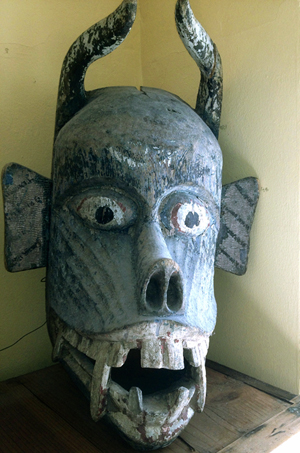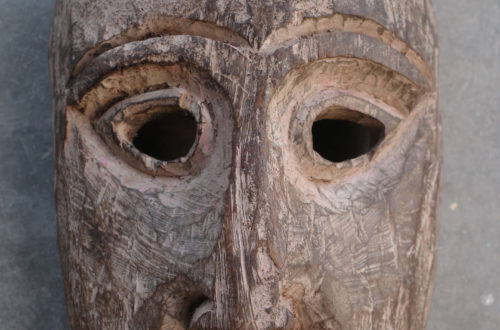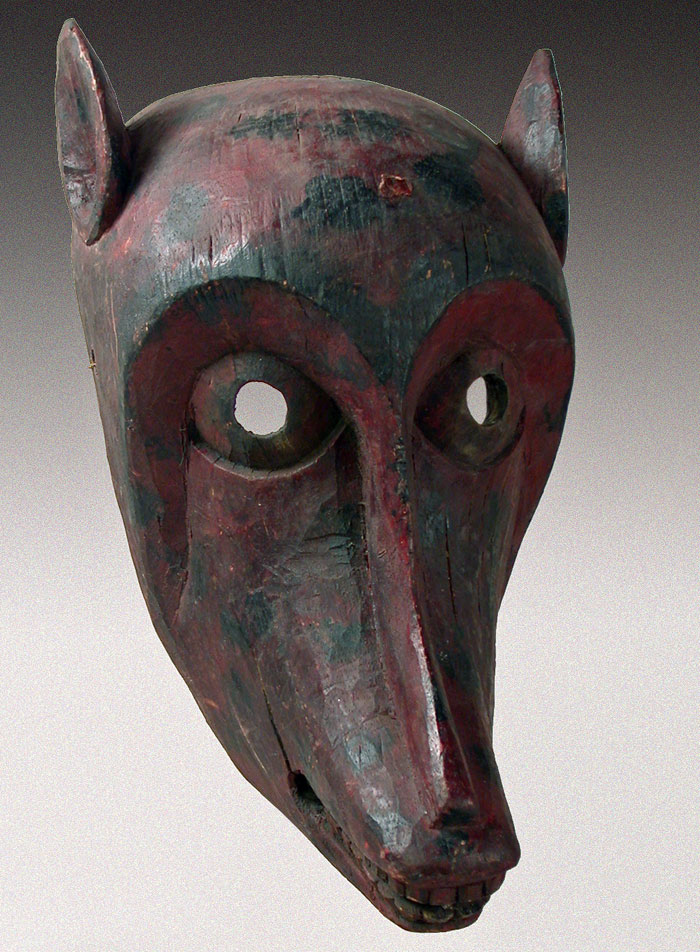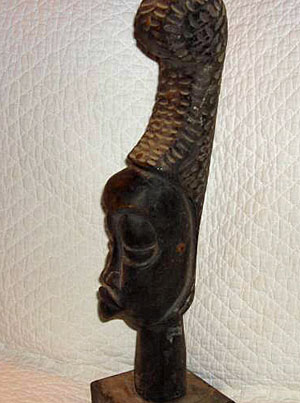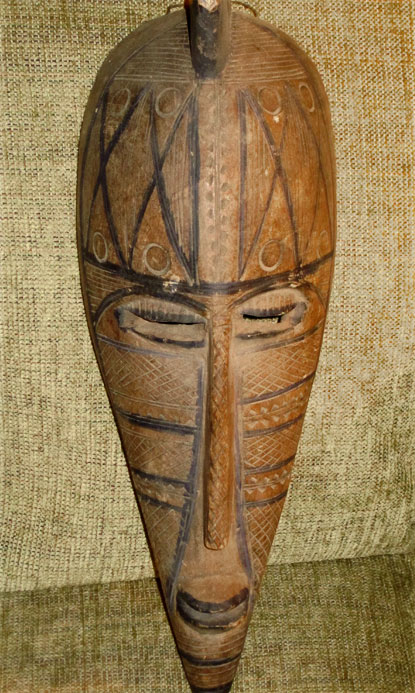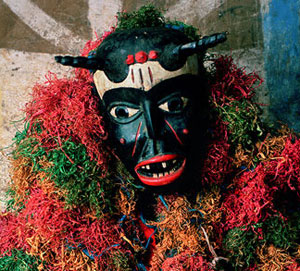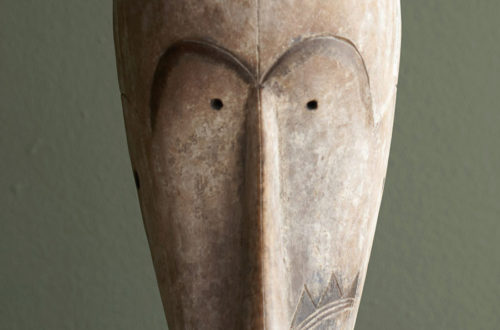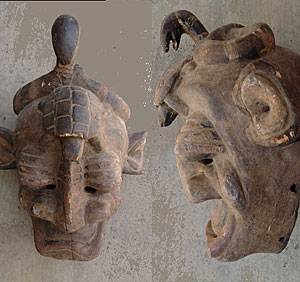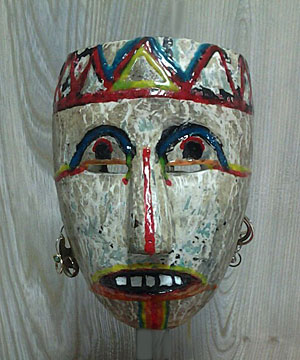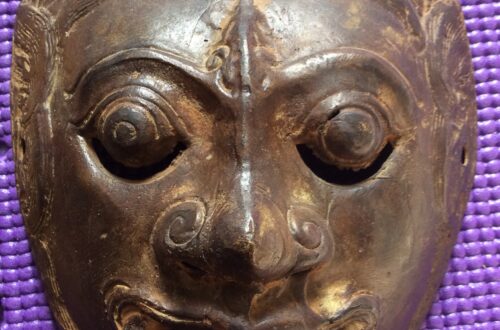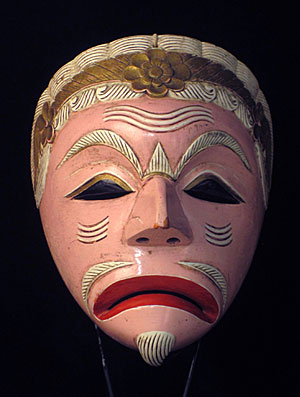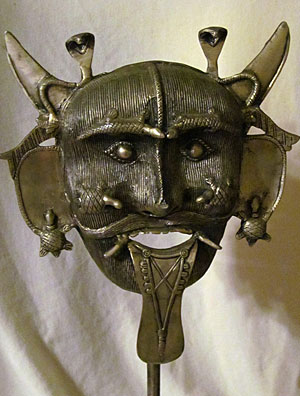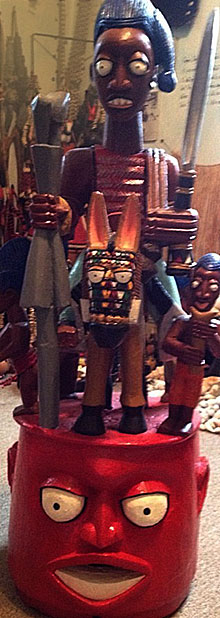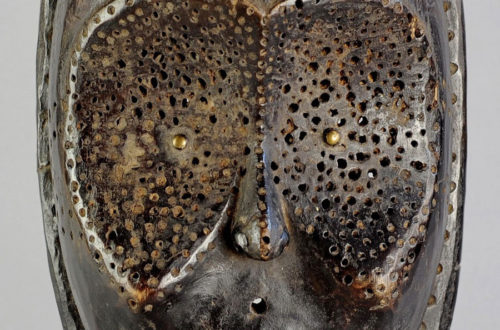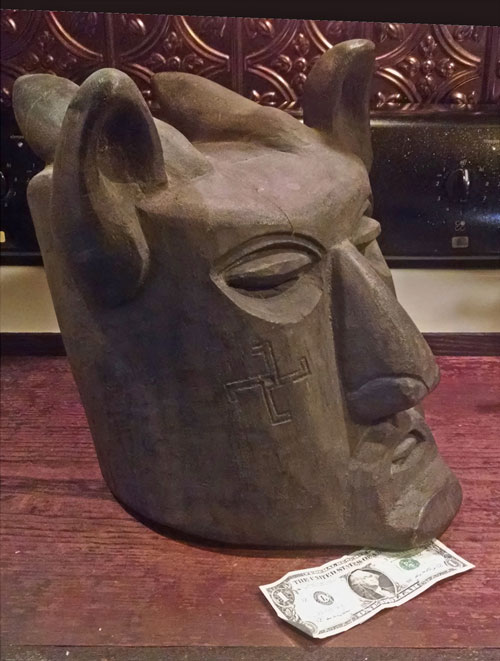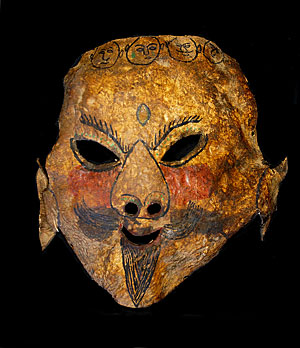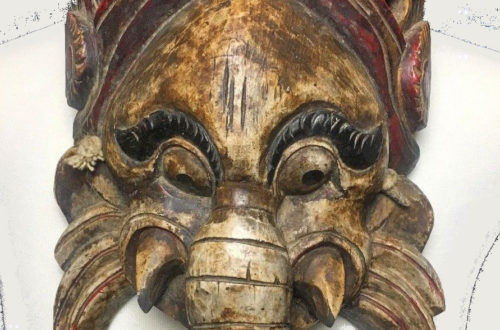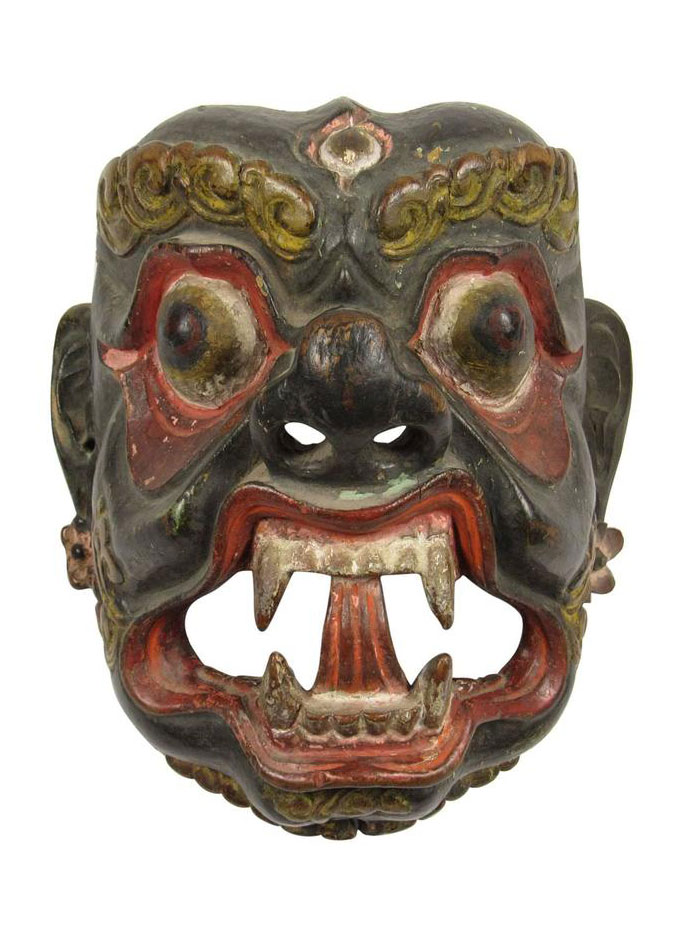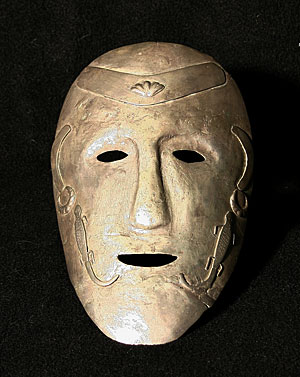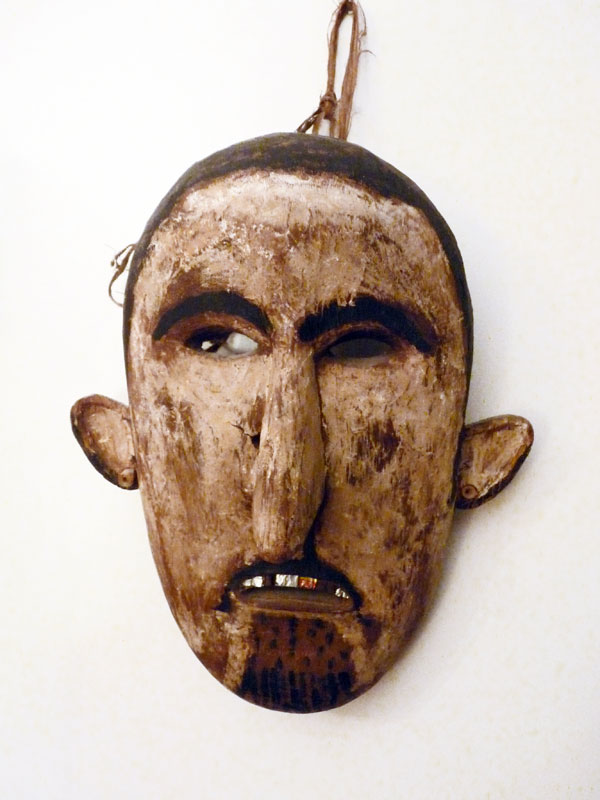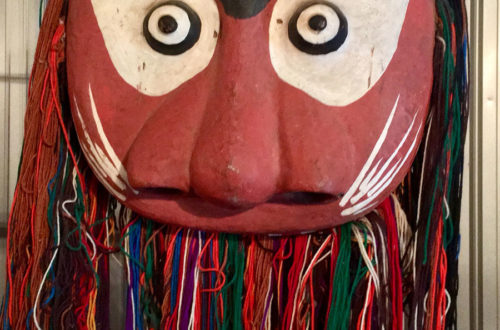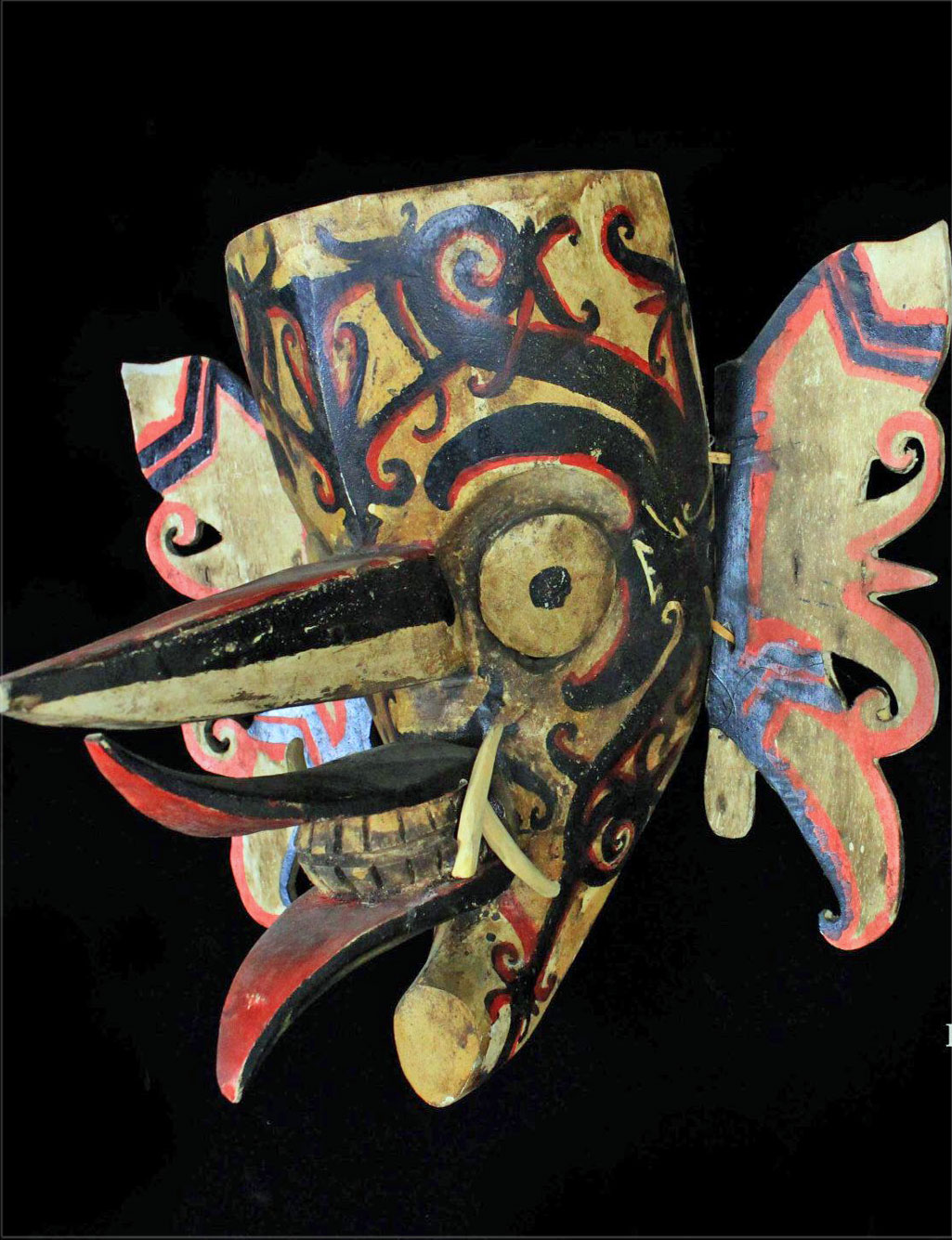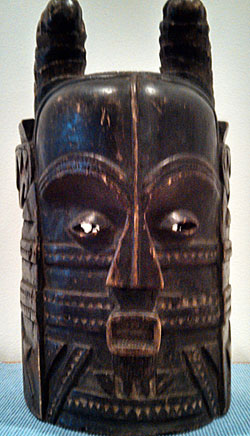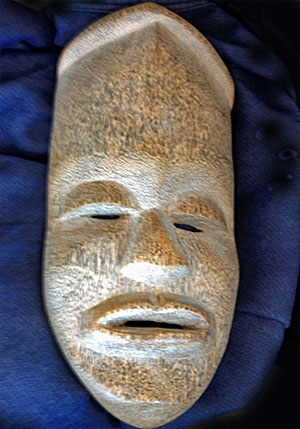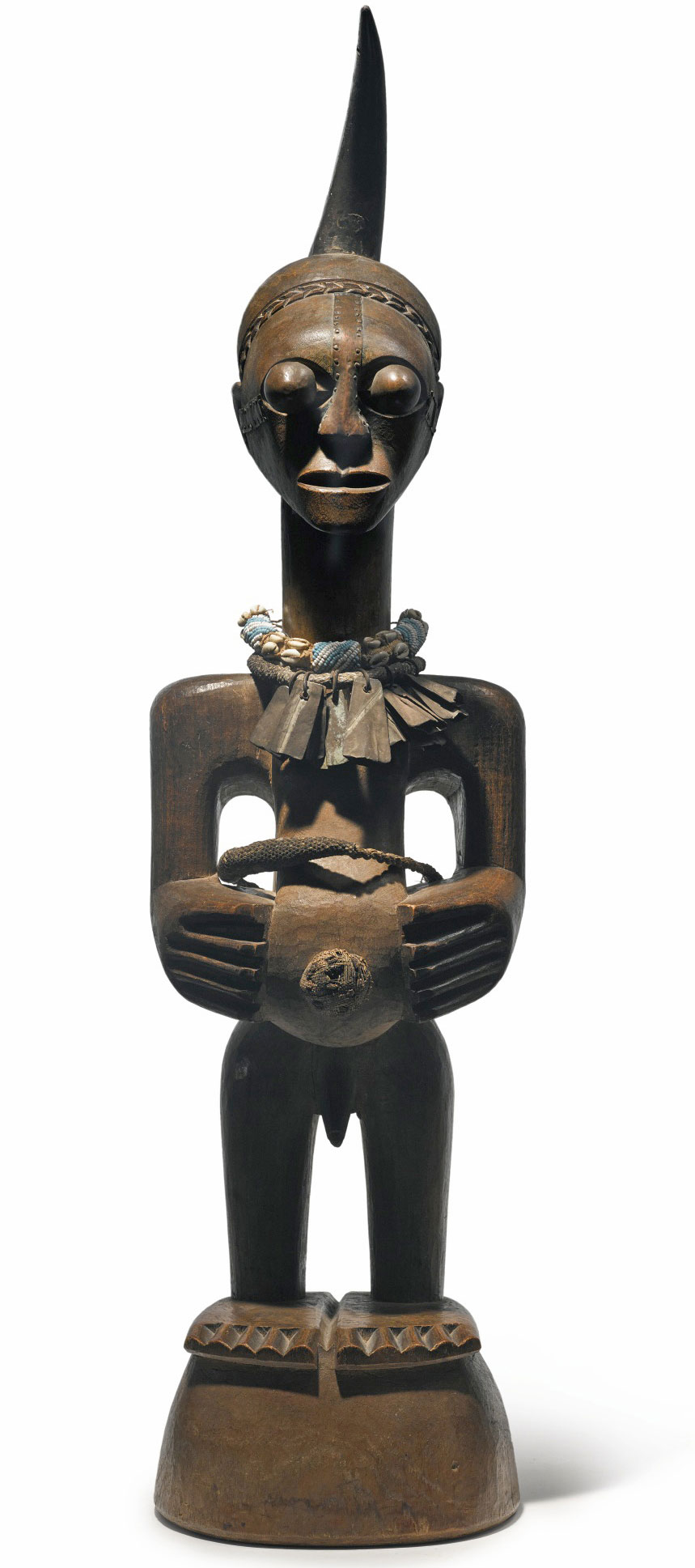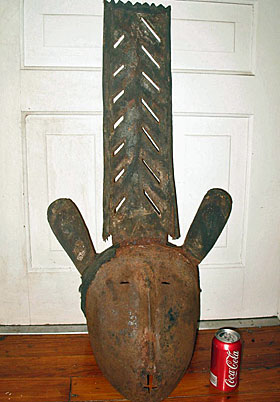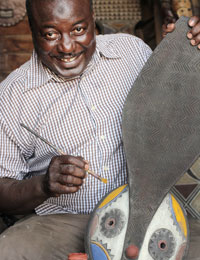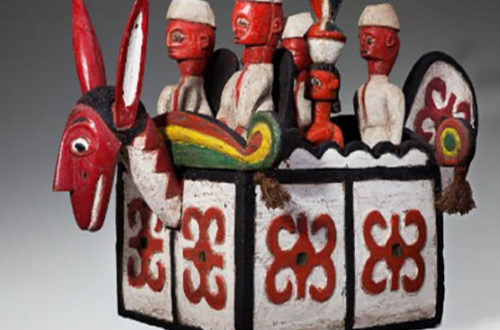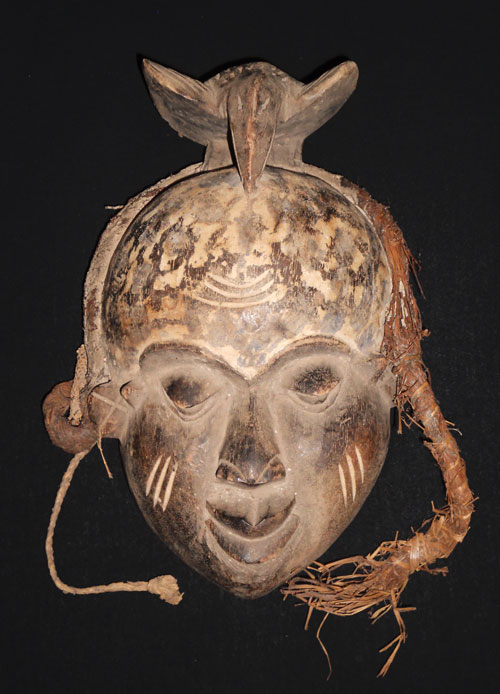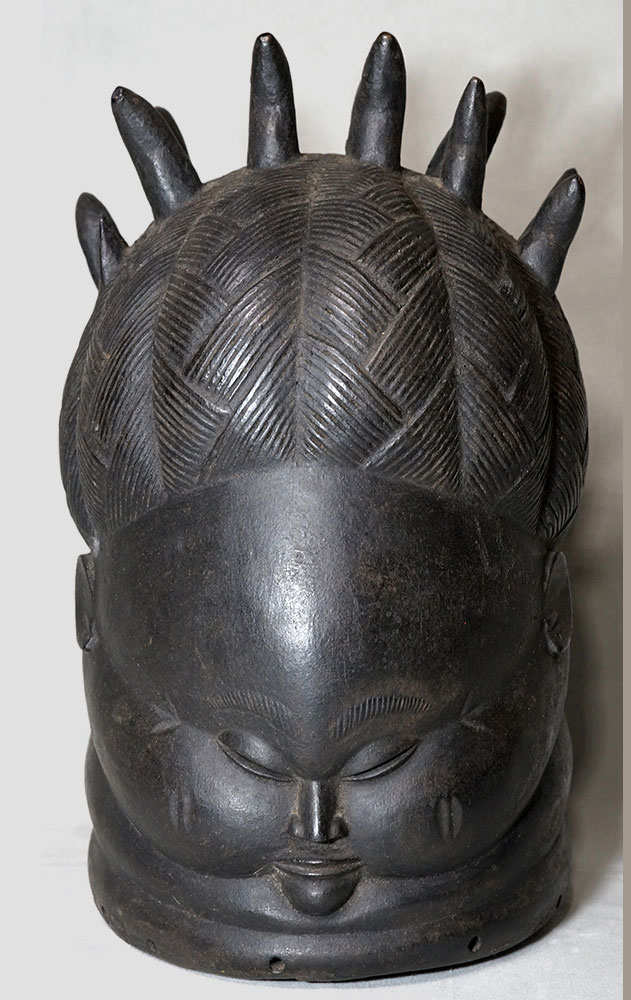Q: My daughter was given this mask by a friend. Unfortunately she does not know any details about it. It is quite large, about 2.5 feet high and about 18 inches wide. Any help with identifying this mask would be great. Thanks for your help. Ted, 573 A: I believe this is an older and well used mask from Sri Lanka.
-
-
More about tourist carvings
A few days ago someone sent pictures of this carved head to African_Arts, the Yahoo discussion group. She was asking for more information about the piece. (It reminds me of some masks that have been sent to the Mask Man.) One of the group’s members wrote the following answer, which I found very interesting, especially after just writing the previous post. Here it is.
-
Tourist masks are plentiful
Most of the photos sent in are of tourist masks. Here are nine different ones, and I have seen each of them hundreds of times. These and other designs are being manufactured in many different countries. They are plentiful and quite affordable… if you do some comparison shopping, but don’t pay a lot of money for them. I always reply to the sender, but rarely post these tourist masks on the Mystery Mask blog. That’s because they are not worn in culture, nor can I be sure where they were made. A mask bought in Port-au-Prince could have been imported from Indonesia.
-
Love it or hate it
Q: Bob, thoughts on this one? Nate, 571 A: Rough looking masks like this often turn up in rural areas of Java. It has probably been repainted several times. The last time very quickly. Could have been inspired by Jean-Michel Basquiat. Just joking– I find the mask very attractive. I wonder how many other collectors do?
-
Where is this mask from?
Recently I saw this big, unpainted balsa wood mask and instantly fell in love. It was described as an “Unusual tribal mask of unknown origin.” It is 10 inches high and about the same width. The carving is thin and very well done. The rod that holds the articulating jaw is of strong vine-like wood. Of course, balsa grows in South and Central America and I vaguely remembered this mythological character from somewhere, so I thought I could ID it. I did the research, but with no success. Can you help?
-
It looks like it’s just been created
Recently I noticed this large and beautifully painted piece on eBay. The copy said “Authentic Yoruba Epa mask. Expertly refurbished & lovingly restored. Tribally used. No cracks, scratches or breaks. Impeccably repaired. Used by the Ekiti Yoruba of Southwestern Nigeria during their annual Epa festival.” I was amazed to see an Epa mask in such pristine condition. 569 Wikipedia says “An Epa is a ceremonial mask worn by the Yoruba people of Nigeria during the Epa masquerade.
-
Rare Himalayan leather masks
Q: Attached are some new ones I just got. The Nepalese yak hide masks are kind of odd. I haven’t seen their like before. Aaron, 568 A: I have seen a few Nepalese leather masks like the most primitive one, but never one with colored drawings on it.
-
Unusual metal mask from Indonesia
Q: A friend has sent me this metal mask. I don’t think it’s authentic ethnographic but I can’t place the likely origin. I thought possibly Indonesian. Any ideas? Jon, 567 A: I agree on Indonesia, the southern part, Timor or Sumba.
-
Unusual mask from the Congo
Q: I recently purchased this mask from a Cameroonian street vendor in NYC. He said it was from Congo. It is made of wood, fairly light and pithy (palmwood?) and is roughly 16″H. After some online research I found a Bushoong mask that was on exhibit in Durango, CO earlier this year: As you can see it is strikingly similar. So perhaps mine is of Bushoong origins or a reproduction there of. More importantly I’m curious of it’s spiritual connotations. Is it for divination, sorcery, initiation? Goodwill, evil? Chris, 566A A: I also looked through some books and searched the internet finding nothing quite like your mask.
-
Featured artist on Novica.com
“My name is Salihu Ibrahim, and I was born in the eastern region of Ghana in 1964. My father, Ibrahim, died when I was a child and I’m certain his death actually changed and shaped the course of my life. With the death of my father, I was sent to live with one of my father’s closest friends, Opanin Osei, a renowned traditional carver to the then Akwamu chief and the people of Akwamu. At the age of ten, I was fully under the carving tutelage and control of Opanin Osei, who usually carved the items and then passed them on to me for the final polishing and beautification. I…
